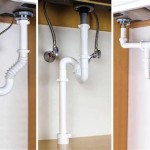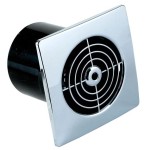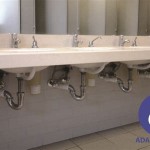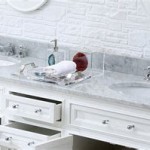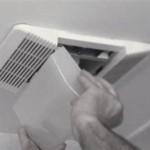How Much Does It Cost To Install An Extra Bathroom?
Installing an extra bathroom is a significant home improvement project that can substantially increase a property's value and functionality. However, understanding the associated costs is crucial for effective budgeting and planning. The price of installing an extra bathroom can vary widely depending on several factors, including the bathroom's size, the complexity of the plumbing and electrical work, the quality of the fixtures and materials chosen, and the geographic location of the project.
A typical range for installing an extra bathroom falls between $5,000 and $35,000. This broad range reflects the multitude of choices and challenges involved. A small, basic powder room installed in an easily accessible location might cost closer to the lower end of the spectrum. Conversely, a full bathroom with high-end finishes and requiring extensive plumbing modifications could easily exceed the higher end of the range. This article will explore the various cost components involved in installing an extra bathroom, providing a comprehensive overview to aid in informed decision-making.
Key Factors Influencing the Cost
Several key factors play a significant role in determining the overall cost of installing a new bathroom. These encompass the location of the bathroom, the complexity of plumbing and electrical work, the materials and fixtures selected, and labor costs. Each of these components can significantly impact the final price, necessitating careful consideration during the planning phase.
Location: The location of the new bathroom is a primary cost driver. Installing a bathroom adjacent to existing plumbing lines is considerably less expensive than installing one in a location that requires extending those lines. If the new bathroom is planned for a basement or an area far from existing water and drainage pipes, the cost of running new lines can be substantial. Additionally, dealing with concrete floors or structural elements can add to the complexity and cost of the project.
Plumbing and Electrical Work: Plumbing and electrical work are often the most expensive aspects of bathroom installation. The cost of plumbing depends on the distance to the main water supply and drain lines, the number of fixtures (toilet, sink, shower, or tub), and the complexity of connecting these fixtures. Electrical work involves wiring for lighting, ventilation, and outlets, potentially requiring upgrades to the electrical panel if the existing system cannot handle the additional load. Obtaining the necessary permits and ensuring compliance with building codes are also essential and contribute to the overall expense.
Materials and Fixtures: The price of materials and fixtures can vary dramatically based on quality and style. Basic, builder-grade fixtures are less expensive than high-end, designer options. The choices for flooring, tiling, countertops, cabinetry, and sanitary ware (toilet, sink, shower, tub) will significantly influence the budget. Custom-built cabinets and high-end natural stone materials will considerably increase the project cost compared to standard laminate countertops and ceramic tiles. Selecting energy-efficient fixtures can lead to long-term savings but may increase the initial investment.
Labor Costs: Labor costs typically account for a significant portion of the total bathroom installation expenses. Hiring licensed plumbers, electricians, and general contractors is crucial to ensure the job is done correctly and according to code. Labor costs vary depending on the experience and expertise of the professionals hired, as well as the prevailing labor rates in the geographic area. Obtaining multiple quotes from different contractors is recommended to compare pricing and ensure a competitive rate.
Detailed Breakdown of Cost Components
To provide a clearer understanding of the associated expenses, a detailed breakdown of the different cost components involved in installing an extra bathroom is provided below. This breakdown includes estimates for each category, allowing for a more accurate assessment of the potential project cost.
Plumbing: Plumbing costs can range from $2,000 to $8,000 or more, depending on the complexity of the installation. This includes the cost of running new water supply lines and drain lines, installing the toilet, sink, shower, or tub, and connecting all fixtures to the existing plumbing system. Consider whether a macerating toilet is needed, for example, if the new bathroom is in the basement and the sewer line is above the floor. This option can significantly impact plumbing costs.
Electrical: Electrical work typically costs between $500 and $2,000. This covers wiring for lighting, ventilation fans, and electrical outlets. If the existing electrical panel needs upgrading to accommodate the additional load, this can significantly increase the cost. It's imperative to hire a licensed electrician to ensure the work is done safely and complies with local codes. Ensuring proper grounding and GFCI protection in wet areas is essential for safety.
Framing and Drywall: Framing and drywall work can cost between $500 and $2,000. This involves framing the walls of the new bathroom and installing drywall. If the room requires significant structural modifications, the framing costs will be higher. Ensuring proper insulation within the walls is also essential for temperature control and energy efficiency.
Flooring: Flooring costs can vary widely, ranging from $500 to $5,000 or more, depending on the material chosen. Common flooring options for bathrooms include ceramic tile, porcelain tile, vinyl, and natural stone. Ceramic and porcelain tiles are durable and water-resistant and are available in a wide range of styles and prices. Vinyl flooring is a more affordable option that is also water-resistant. Natural stone, such as marble or granite, is a more luxurious option that is also more expensive.
Fixtures and Fittings: The cost of fixtures and fittings can range from $1,000 to $10,000 or more, depending on the quality and style of the chosen items. This includes the toilet, sink, shower or tub, faucets, and showerheads. Toilets can range from basic models costing a few hundred dollars to high-end, water-saving models costing several thousand dollars. Sinks can also vary widely in price, depending on the material and design. Showers and tubs can range from basic fiberglass units to custom-built tile showers and soaking tubs.
Vanity and Countertop: The cost of a vanity and countertop can range from $500 to $5,000 or more, depending on the size, material, and style. Vanities can be purchased pre-assembled or custom-built. Countertops can be made from a variety of materials, including laminate, solid surface, granite, marble, and quartz. The choice of material will significantly impact the overall cost.
Lighting and Ventilation: Lighting and ventilation costs typically range from $200 to $1,000. This includes the cost of installing new light fixtures and a ventilation fan. Proper ventilation is essential in a bathroom to prevent moisture buildup and mold growth. Choosing energy-efficient LED lighting can help reduce energy costs.
Permits and Inspections: Permits and inspections can cost between $100 and $500. Obtaining the necessary permits is essential to ensure the project complies with local building codes. Inspections are required to verify that the work is done correctly and safely.
Labor: Labor costs can range from $2,000 to $10,000 or more, depending on the scope of the project and the hourly rates of the contractors. This includes the cost of hiring a general contractor, plumber, electrician, and other tradespeople. Obtaining multiple quotes from different contractors is recommended to compare pricing and ensure a competitive rate.
Strategies for Cost Optimization
While installing a new bathroom can be a significant investment, there are several strategies to optimize costs without compromising quality or functionality. Careful planning, strategic purchasing, and efficient project management can help control expenses and ensure the project stays within budget.
Careful Planning and Design: A well-thought-out plan and design are crucial for minimizing costs. Consider the layout of the bathroom and how it will integrate with the existing plumbing and electrical systems. Simpler designs are generally less expensive than complex ones. Careful planning can also help avoid costly mistakes and rework during construction.
Strategic Purchasing: Shopping around for materials and fixtures can save a significant amount of money. Compare prices from different suppliers and consider purchasing materials during sales or clearance events. Consider purchasing items from online retailers, but be sure to factor in shipping costs and return policies. Opting for standard sizes and readily available materials can also help reduce costs.
DIY (Do-It-Yourself) Work: Performing some of the work yourself can save on labor costs. However, it is essential to only take on tasks that fall within your skill set and comfort level. Certain tasks, such as plumbing and electrical work, should always be left to licensed professionals to ensure safety and compliance with building codes. Tasks that can be performed by homeowners include demolition, painting, and some basic tiling.
Repurposing and Salvaging: Consider repurposing existing materials or salvaging items from other renovation projects. This can be a cost-effective way to add character and unique elements to the new bathroom while reducing waste. Items such as old doors, windows, and cabinets can be repurposed and refinished for use in the bathroom.
Phased Approach: If the budget is limited, consider taking a phased approach to the project. Focus on the essential elements first, such as plumbing and electrical work, and complete the remaining tasks over time as budget allows. This can help spread out the costs and make the project more manageable.
Prioritize Functionality Over Luxury: While it is tempting to splurge on high-end fixtures and finishes, prioritizing functionality over luxury can help keep costs under control. Choose practical and durable materials that will withstand daily use without breaking the bank. Opt for simpler designs and avoid unnecessary features that add to the cost without significantly improving the functionality of the bathroom.
Obtain Multiple Quotes: Obtaining multiple quotes from different contractors is essential for comparing pricing and ensuring a competitive rate. Be sure to get detailed, written quotes that clearly outline the scope of work and the associated costs. Compare the quotes carefully and ask questions about any discrepancies or unclear items. Don't automatically choose the lowest bidder, as this may indicate lower quality work or materials. Consider the contractor's experience, reputation, and references when making a decision.
By carefully considering these cost-saving strategies, homeowners can effectively manage the expenses associated with installing an extra bathroom and achieve their desired results within a reasonable budget.

How Much Does It Cost To Add A Bathroom 2024 Data

Cost To Add A Bathroom 2024 Guide Forbes Home

How Much Does A New Bathroom Cost In 2024 Victoriaplum Com

How Much Does It Cost To Add A Bathroom 2024 Data

How Much Does An Extra Bathroom Add To The Value Of A House Resi

How Much Does It Cost To Add A Bathroom

How Much Does A New Bathroom Cost In 2024 Victoriaplum Com

How Much Does A Bathroom Remodel Cost 2024 Data Angi

How Much Does It Cost To Add A Bathroom Home Nj Remodeling Renovation

Average Bathtub To Shower Conversion Cost 2024 Forbes Home
Related Posts
